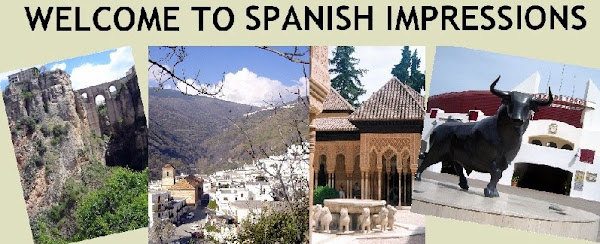Soria is situated in Castile-León about 110 miles northeast of Madrid and lies on the western bank of the River Duero. The city's historic centre preserves an important Romanesque legacy as well as excellent examples of civic architecture.
In the delightful and typically Castilian Plaza Mayor stands a number of interesting buildings including the Casa de los Doce Linajes, a 17th-century building that is currently the town hall. The former town hall is next door but is currently used as a Cultural Centre. The Tower of Doña Urraca is situated in one corner of the square and the Church of Santa María La Mayor stands just behind it.
| Plaza Mayor - photo: public domain (Txo) |
Talking about churches, Soria is noted for its collection of architect-urally distinctive churches many of them Roman-esque. Let's take a look at some of them!
The 12th-century Church of Santo Domingo, situated in the historic quarter, is one of the town's most important places of worship. Its main front is considered to be one of the finest Romanesque façades in existence - so much so - that it has been declared a National Monument. This honour has also been bestowed on the cloisters of another religious building in Soria - the Procathedral of San Pedro. It was built at the end of the 12th century and reconstructed during the 16th. It has a Plateresque façade and three Gothic naves. The Church of San Juan de Rabanera is pretty impressive too - probably why it, too, is a National Monument! This 12th-century temple has a number of Byzantine influences. Its façade is particularly beautiful and the inside is also attractive, especially the apse and reredos.
| Santo Domingo photo: public domain (Txo) |
.jpg) |
| San Juan de Rabanera photo: public domain (Elena FD) |
| Soria Concatedral de San Pedro photo: public domain (Zarataman) |
.JPG) |
| Monasterio de San Juan de Duero cloisters photo: public domain ( Txo) |
.JPG) |
| Hermitage of San Saturio photo: public domain ( Zarataman) |
Before we leave Soria, we must explore some of the other delightful places in this attractive city. In the streets of the historic quarter there are many beautiful buildings - no more so than the Palacio de los Condes de Gómara. It is considered to be the jewel of Sorian civil architecture with its outstanding stone façade and quadrangular tower. It is a Renaissance building built in the 16th century and now houses the Provincial Court. It goes without saying that it has been declared a National Monument! Another fine residence is the Palacio de los Ríos y Salcedo. This 16th-century Renaissance building is also a National Monument and, these days, it serves as the Provincial Historic Archive.
.jpg) |
| Palacio de los Condes de Gómara photo: public domain ( Numantino) |
https://plus.google.com/118235640981670233395/about
more blogs by Robert Bovington...
"Photographs of
|
|
"postcards from
|
|
"you couldn't make it up!"
|
|
"a grumpy old man in
|
|
"bits and bobs"
|
|
"Spanish Expressions"
|
|
"Spanish Art"
|
|
"Books About
|

No comments:
Post a Comment